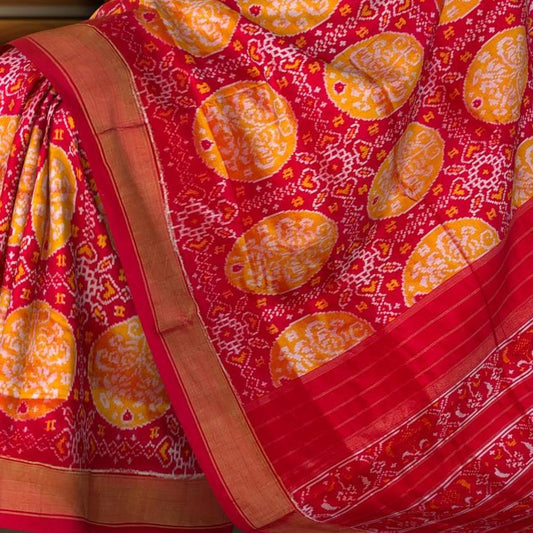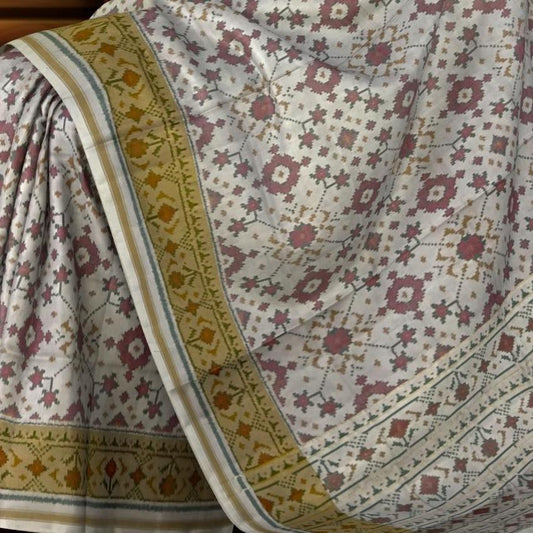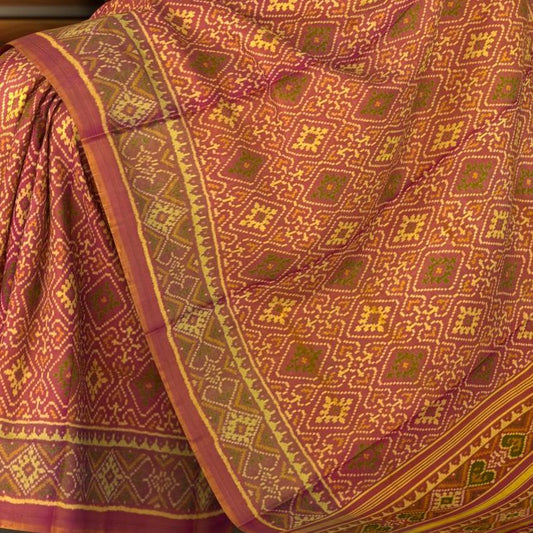Patan: A Tapestry of Tradition and Skill in Patola Weaving
Nestled in the heart of Gujarat, India, lies Patan, a city steeped in history, culture, and artistic heritage. Renowned for its exquisite craftsmanship, Patan has earned a place of pride in the world of textiles, particularly for its intricate and vibrant Patola sarees. This article delves into the profound significance of Patan in the evolution of Patola weaving, exploring the contributions of local communities and the legacy of renowned weavers who have kept this ancient art form alive.
A Legacy of Handloom Heritage: Patan's Role in Patola Weaving
Patola weaving, a complex and labor-intensive art form, has been practiced in Patan for centuries. The city's strategic location on the ancient trade routes facilitated the exchange of ideas and techniques, contributing to the development of this unique textile tradition. The intricate double ikat technique, where the warp and weft threads are dyed before weaving, gives rise to the stunning geometric patterns that are characteristic of Patola sarees.
The historical significance of Patan in Patola weaving is undeniable. The city played a crucial role in preserving and promoting this art form, making it an integral part of its cultural identity. The patronage of royal families and the thriving trade networks of the past ensured the continuation of this craft, passing down knowledge and skills from generation to generation.
Local Communities: Guardians of the Craft
The sustenance of Patola weaving is inseparable from the dedication of local communities in Patan. For generations, these communities have played a vital role in maintaining the art form's unique techniques and aesthetics. From the skilled weavers who patiently weave the intricate patterns to the artisans who prepare the dyes and the merchants who market the finished product, each individual contributes to the tapestry of Patola weaving.
The community-based approach to Patola weaving has ensured its survival and evolution. Traditional knowledge is passed down orally and through apprenticeship, fostering a deep sense of pride and ownership among the weavers. This collaborative spirit has helped maintain the high standards of quality and craftsmanship that Patola sarees are known for.
Renowned Patola Weavers and Families: A Legacy of Expertise
The rich history of Patola weaving in Patan is interwoven with the stories of renowned weavers and families who have dedicated their lives to mastering this intricate craft. These artisans, through their unwavering commitment and innovative techniques, have not only preserved the tradition but also elevated it to new heights. Here are some notable examples:
- The Salvi Family: Known for their expertise in creating traditional Patola patterns, the Salvi family has played a significant role in maintaining the authenticity of this art form. Their dedication to quality and their innovative designs have made them highly respected within the Patola weaving community.
- The Sutaria Family: This family has been associated with Patola weaving for generations, renowned for their mastery of intricate double ikat techniques. They are known for producing sarees with complex geometric patterns, showcasing the technical prowess of Patola weaving.
- The Sangani Family: The Sangani family is recognized for their innovative designs and their commitment to exploring new color combinations and patterns. They have played a crucial role in adapting Patola weaving to contemporary trends while staying true to its traditional essence.
These families and many others like them have contributed significantly to the legacy of Patola weaving in Patan. Their expertise, dedication, and unwavering passion have ensured that this ancient art form continues to thrive, capturing the imagination of generations to come.
Preserving the Legacy: A Collective Effort
Patan's rich history in Patola weaving stands as a testament to the enduring power of tradition and craftsmanship. The city's commitment to preserving this art form is a testament to the resilience of its local communities and the enduring legacy of its renowned weavers. As we move forward, it is crucial to continue supporting these artisans and the art they so expertly practice. By appreciating and celebrating the beauty and complexity of Patola weaving, we contribute to the continued legacy of this remarkable craft and ensure that its vibrant threads continue to weave a tapestry of cultural richness for generations to come.







Leave a comment
Please note, comments need to be approved before they are published.